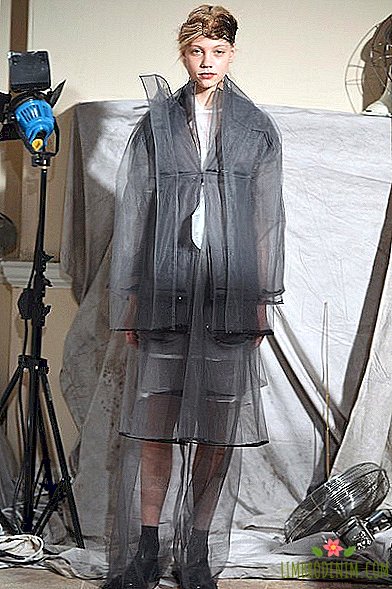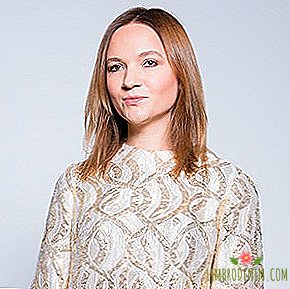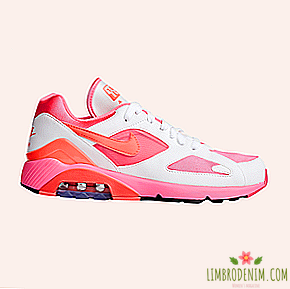Everything is clear: Why transparent things do not go out of fashion
We tell about the trends from the podiumthat can be adapted for your wardrobe in the next six months. We could not ignore the trend for transparent things, in which fashion and contemporary art meet. All because of experiments with forms and materials: in addition to the usual organza, silk and lace, designers use plastic, polyethylene and vinyl, offering both rather risky and elegant outfits. The main plus of transparent materials is a wide choice of combinations. We tell how transparent things for nearly three hundred years remain loved.

How it all began
The first transparent dresses appeared already in ancient Egypt and India. Then the fabrics, through which the skin was visible, were used in Egyptian calaziris embroidered with threads or bright Indian sarees. But you can only talk about true love of transparency from the 18th century.
Marie Antoinette wore transparent clothes, in the portrait of 1783 by Vizhe-Lebrun she is depicted in a thin muslin dress, resembling a multi-layered combination. The French women of that time did not lag behind the royal fashion, choosing clothes from organza or gas. For which they were subjected to serious criticism: some were dissatisfied with the fact that such dresses resemble dressing gowns, others were against excessive frankness. Even the wife of President Abigail Adams, one of the first famous American feminists, at one time was shocked by the openness of French dresses.
At the beginning of the 19th century, separate parts were sewn from transparent material - sleeves or bodice. However, this element of the dress was often unreliable: moving in a dance or bending over, the girl could barely stand bare. Such incidents were considered a public shame and caused a flurry of ridicule. For example, the Scottish cartoonist Isaac Kruijkshenk, known at that time, portrayed women who do not part with transparent dresses even in winter, which makes them walk almost naked.


Transparent outfits always irritated the conservative public, so at the beginning of the 20th century, in different states of America they recommended banning them at all for wearing on the street and even arresting girls whose dresses look too frank. It was then that the English embroidery came into vogue, which can be considered the ancestor of the modern trend of "transparent" lace - although it was also considered audacity, because the body could peep through the slits or too thin fabric.
A taboo on transparent materials was removed in the 60s: a sexual revolution broke out, and models in tight-fitting outfits pulled onto the catwalks. A special effect of nudity was created by spotlights: when, during the show in 1967, Rosita Missoni noticed that bras were peeking from under knitwear and told them to take off, the lights on the catwalk lit up the bare breasts of the models. Other designers just picked up the idea - Ozzie Clark and Yves Saint Laurent showed transparent outfits for which underwear was not intended at all. The provocation was a success: in the next few decades at parties the most daring models and actresses danced in mesh t-shirts and dresses. Among them are the singer and actress Jane Birkin in a black transparent sweater, the model Jerry Hall in a hyper-absorbing overalls, the singer Lisa Minnelli in a translucent dress with a neckline and the singer Cher in the thinnest sari.
Designers took turns playing with the beauty of the body, the delicacy of materials and the flexibility of the forms. So, in the 90s, Alexander McQueen used polyethylene for a dress that fits snugly to the body. Calvin Klein proposed to wear translucent white T-shirts and shirts in business attire. Comme des Garçons reminded of the thin lace, again beating the idea of a cocoon - even in combination with heavy fabrics, it looked extravagant.


How transparent things are back in fashion
Transparent things never for a long time disappeared from the catwalks: almost every season in the collection of at least one designer you can find an outfit from the finest materials. Some designers tried to write transparency in strict or delicate images - for example, Marc Jacobs in 2003 combined skirt, blouse and cardigan in pastel colors. In the same year, Domenico Dolce and Stefano Gabbana demonstrated how a combination of a bra with a thinnest sweater can look not vulgar.
Transparency and delicate lace renaissance began in 2006, when models in smoky, short and midi-dresses appeared on the catwalks at the Balenciaga show. Givenchy also experimented with prints and layering: in one outfit they combine python and floral prints, a light blouse and a fluffy skirt. They seem to demonstrate: the material is so weightless that any extra detail like the wrong laundry will destroy it.
On the shows of recent years, the model stepped into absolutely transparent things without underwear at all. The finest silk dress was shown by Gucci in 2016. At the same time, Simone Rocha released a top of a crystal mesh, putting it on the naked body of the model.


What to wear
Transparent things can be used in completely different styles, from okolosportivnogo to minimalism. If silk and chiffon are close to you, then the choice for these materials is huge: there are translucent puffy skirts, the finest blouses and dresses that can be worn as a second layer. Experiment with combinations: a long skirt, embroidered with an ornament, will organically look with a simple T-shirt with an inscription like that of Christian Dior. Lace-up boots and high-waisted cotton panties will suit for the finished look (lace in the image will be superfluous). Rubber boots to match the tulle dress will also look great - an example of such images can be seen from Simone Rocha.
It is not necessary to look for completely transparent things. In the trend and transparent details: sleeves, bodices, collars. Rodarte and Anna Sui presented such a classic, richly decorating dresses with prints, achieving an almost “protective” effect. The same task can serve as a multi-layered: combine transparent dresses and skirts with sweatshirts, leather jackets, vests, parks, jackboots and noticeable underwear (a prerequisite is high waist). Examples of multi-layered and full details of the dress can be seen at Coach 1941. The image connecting the lacquered boots, a simple transparent dress and a bright park, showed Rag & Bone.
If you are tired of familiar materials, pay attention to plastic. Sometimes unusual things from it can be found in the mass market. This year, for example, Topshop presented transparent pants made entirely of plastic. They can experiment with the color of underwear and socks - the brighter, the more interesting. Their undoubted advantage is the properties of the material itself: waterproof trousers will not only be useful in unpredictable weather, but will also look spectacular.
Photo: Wikipedia, Wikimedia Commons (1, 2), MSGM, Phoebe English





